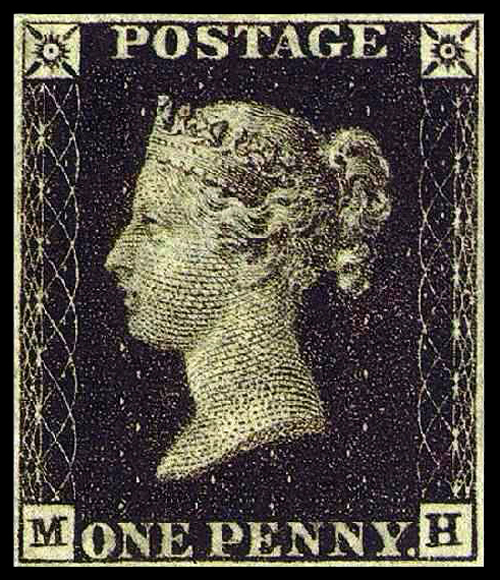Victorian Britain: a brief history
Reference guide for primary

Victorian era | Questions | Industrial revolution | Social reforms | Empire | Teaching the Victorians | Citizenship | Victorian achievements | Key concepts
| <
This resource is free for everyone |
|
For access to hundreds of other high-quality resources by primary history experts along with free or discounted CPD and membership of a thriving community of teachers and subject leaders, join the Historical Association today
 |
The Victorian era
The 19th century was one of rapid development and change, far swifter than in previous centuries. During this period England changed from a rural, agricultural country to an urban, industrialised one. This involved massive dislocation and radically altered the nature of society. It took many years for both government and people to adjust to the new conditions.
Strictly speaking, the Victorian era began in 1837 and ended with Queen Victoria's death in 1901, but the period can be stretched to include the years both before and after these dates, roughly from the Napoleonic Wars until the outbreak of World War I in 1914.
Questions to discuss
- Does technological advance mean the same thing as progress?
- How does Victorian pollution compare with pollution in our own time?
- What patterns of migration occurred – within, from, and to the UK?
- Could the 19th century be called ‘The Age of Improvement'?
- How does the British Empire compare with the Roman Empire?
Key themes and developments
Over the period there were changes and developments in every sphere of life. Key themes include the following:
The Industrial Revolution
This was made up of technological, scientific and industrial innovations (e.g. mass production, steam engines, railways, sewing machines, gas and electric light, the telegraph) that led to an enormous expansion of production, particularly through the factory system. There were huge social costs: the dehumanisation of work, child labour, pollution, and the growth of cities where poverty, filth and disease flourished. Child labour and poverty were also a feature of rural life, where farm work involved long hours, very low pay and exposure to all weathers.
See also Local history unit – your local railway
Population growth and migration
Between 1801 and 1871 alone the population of the UK doubled. Migration in both directions was a feature of Victorian life. Many Britons left the UK for North America or the colonies in search of a better life. The Irish poor formed a large number of these migrants, especially after the Irish potato famine in 1845: the Irish moved in large numbers to England and Scotland, as well as abroad. Within the UK as a whole, people moved from the countryside into the new industrial cities to find work. Migrants from across the world also settled in Britain, notably Jews from Europe and Russia.
Social reforms
As a result of early campaigns by people such as Michael Sadler and the Earl of Shaftesbury, and reports by parliamentary commissions, legislation protecting child and adult workers began to be enacted. Important reforms included legislation on child labour, safety in mines and factories, public health, the end of slavery in the British Empire, and education (by 1880 education was compulsory for all children up to the age of 10). There was also prison reform and the establishment of the police.
See also:
- One of my favourite history places – Saltaire
- One of my favourite history places – Bournville
- How cruel were the Victorians? (Secondary module on Victorian crime and punishment)
The rise of the middle classes
Society was hierarchical, yet there was much social and geographical mobility. Self-made entrepreneurs used their new wealth to rise in society, building large houses, educating their children and employing domestic servants (by the 1880s 1.25 million people were employed in domestic service – more than in any other work category).
See also A Victorian Christmas
The growth of democracy
The franchise was gradually extended to the working classes, until by 1918 there was universal suffrage for men. The fight for votes for women was in full swing, but it was not until 1930 that women achieved the same voting rights as men.
See also Ideas for Assemblies: Women in Parliament
Expansion of Empire
Before the start of the 19th century Britain had already lost her American Empire, and was acquiring another in India. Her accumulation of additional territory across the globe continued steadily. The Great Exhibition of 1851 displayed the wonders of both industry and Empire. Tied up with the Empire were Britain's trading dominance, naval and military strength, and competition for territory against other European nations. By the end of Victoria's reign imperialists could boast that the sun never set upon the British Empire.
Idealisation of the family
The ideal of family – respectable and loving – dominated the Victorian period. The cult of the home grew steadily, with Queen Victoria and her family providing a role model for the nation. Women were expected to stay at home and bring up the family, but the reality for many poor families was that women had to work; and many single middle-class women also had to work.
The growth of leisure pursuits
The 19th century saw the beginning of mass leisure: seaside holidays, religious activities, and the development of public parks, museums, libraries, spectator sports, theatres and music halls.
Teaching the Victorians
For this period we have the voices of those not often heard: the poor, women and children, giving us a real insight into their thoughts and daily lives, including pictures and words of children working in mines and factories and recorded by parliamentary commissioners.
Books such as Flora Thompson's Lark Rise to Candleford and Mrs Beeton's Household Management are treasure troves of information about domestic work and life that children can relate to. Henry Mayhew's graphic 1851 descriptions of London labour and the London poor illuminate the lives led by destitute people in Victorian cities.
Indeed, the whole period abounds in rich sources: buildings, canals, railways, documents (including statistics, censuses, trade directories, parish registers, evidence to parliamentary commissions), pictures, objects and music.
Films and television series of novels by Charles Dickens convey a particularly vivid sense of life at many levels of Victorian society. There are many websites covering all aspects of the Victorian era.
The period is particularly suited to local history studies, and your local studies library should hold a range of sources for studying events and developments in your area during Victorian times (such as school life through log books, shops and occupations through trade and street directories, who lived in the area through the census, a visit by Queen Victoria, mining disasters).
- The Victorians (article)
- The Victorians (topic pack)
There are opportunities for cross-curricular teaching touching most subjects, but particularly strong are links with geography, design and technology, science and PSCHE – and, as always, with literacy (speaking and listening, reading and writing).
Citizenship
Discussion about Empire and migration can help children to explore issues of identity and how the multicultural Britain of today came about. Particularly useful is to observe how Victorian attitudes towards immigrants have altered over the years, how these immigrants have become part of British society, and the conclusions we can draw from this process.
Victorian achievements
A danger is that children will view the Victorian era as one of unrelenting darkness, cruelty and poverty. So it is worth focusing, too, on the achievements of the Victorians.
What had the Victorians achieved by the end of the era that didn't exist before?
Comparing Victorians with the Romans, and with aspects of today's world, is a useful exercise.
Key concepts
- Industrialisation
- Urbanisation
- Global Empire
- Progress (this is contentious: progress for whom, and progress of what type?)
- Respectability
- Self-help
- Suffrage (the vote: for both men and women)
- Migration

